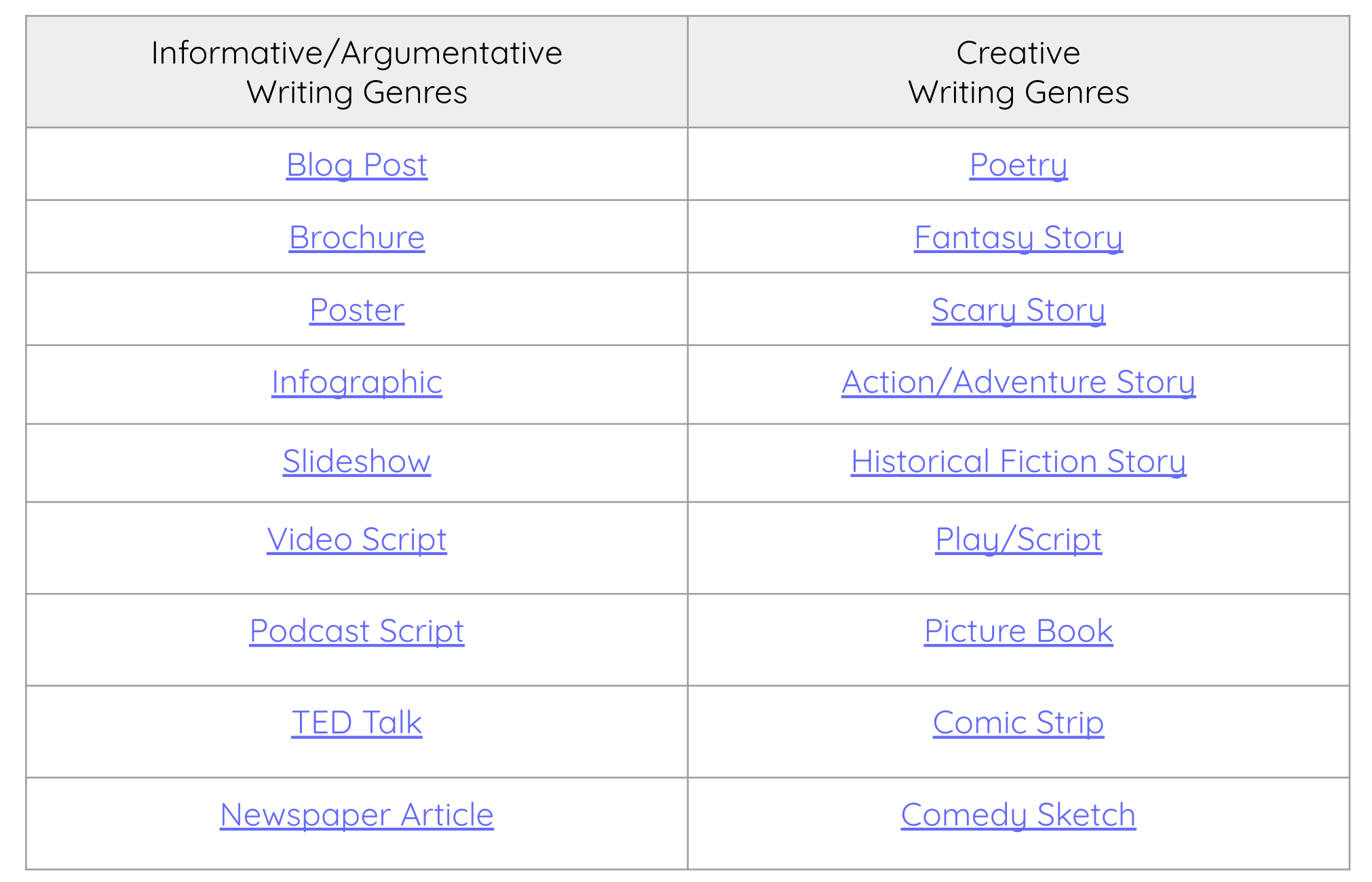How to Teach a Free Choice Writing Unit
Writing teachers know when students have choice, motivation and engagement go up. But, it can feel overwhelming to allow students to choose different genres and topics. Teachers may wonder how they are supposed to teach lessons if every student is doing something different?!! Well this blog post will explain the fives steps you need to take to implement this kind of a unit. The great news is that it’s quite simple and this can be the perfect unit to end a school year! If you’d like to access the materials listed in this blog post you can click here.
Create Interactive Google Slides
The first step in this process is choosing which genres you’d like to allow students to write. Once you’ve done that, you can create a Google Slideshow listing the genres students can choose from. Some students enjoy writing nonfiction, others enjoy fiction. I separated these main categories into “Informative/Argumentative” and “Creative”. I created a table like the one shown below and listed all the genres I could think of that students would be interested in and placed them into each category or column. Then, I made a new slide dedicated to each genre and linked that slide to the first slide.
2. Define Each Genre
Students need simple definitions of each genre. Here are the definitions I’ve come up with for each genre:
Blog Post- A regularly updated website or web page, typically one run by an individual or small group, that is written in an informal or conversational style.
Brochure- A small paper book with panels containing pictures and information.
Poster- A large display of information and pictures which includes a title, headings and captions.
Infographic- A visual representation of information that includes headings, captions, charts, graphs and pictures.
Slideshow- A series of slides with images, headings, charts, graphs, gifs, animations and minimal text meant to present to an audience.
YouTube Video Script- A script is a written out plan or outline for what a recorded video will be about.
Podcast Script- A script is a written out plan or outline for what a recorded podcast episode will be about.
TED Talk- An informative/persuasive speech given to a large audience at a TED Talk conference.
Newspaper Article- A written piece with multiple paragraphs providing information or arguing a point, usually published on a website or newspaper.
Poetry- Poetry is using words to expression ideas creatively.
Fantasy Story- A fantasy story is a story that has make believe characters and settings as well as a conflict, suspense a climax and some sort of resolution or a cliffhanger!
Scary Story- A scary story is a story that has characters, a conflict, suspense, a climax and some sort of resolution or a cliffhanger!
Action Adventure Story- An adventure story is a story that has realistic characters and settings as well as a conflict, suspense a climax and some sort of resolution or a cliffhanger!
Historical Fiction- Historical fiction is a fictional story that is set in a specific time period from the past. Historical fiction stories have characters, conflicts, suspense, a climax and resolution.
Play Script- A script is meant to be acted out by real people! It includes lines for characters as well as stage directions.
Picture Book- A short book written for children that includes lots of pictures!
Comic Strip- A comic strip is a sequence of panels that include pictures, speech bubbles, thought bubbles and or captions. A graphic novel is a story told with comic strips.
Comedy Sketch- A comedy sketch is meant to be performed! A comedy sketch includes lots of funny stories with a punch and jokes intended to make an audience laugh.
3. Collect Materials
The materials needed will vary depending on the genre. Blog posts will require a blogging platform, podcast require a device to record audio and infographics require an app called Canva. But, don’t be intimidated by this technology. This generation of kids has a confidence about figuring out tech that is inspiring! And if students are just as intimidated by trying to figure out a new technology they can go with a less tech dependent option such as a poster, fictional story or maybe even a comedy sketch. Students who enjoy drawing and art will most likely be drawn toward creating a picture book, comic book or brochure. These students could utilize technology such as an apple pencil, iPad, Google slides, or Canva but they might also choose to just use plain sheets of paper. I recommend giving students the option to choose, since this is a “Choice Writing Project”. Below, is a gallery of the different slides I created for each genre. Each slide includes the definition of the genre, the materials need, mentor texts and requirements.
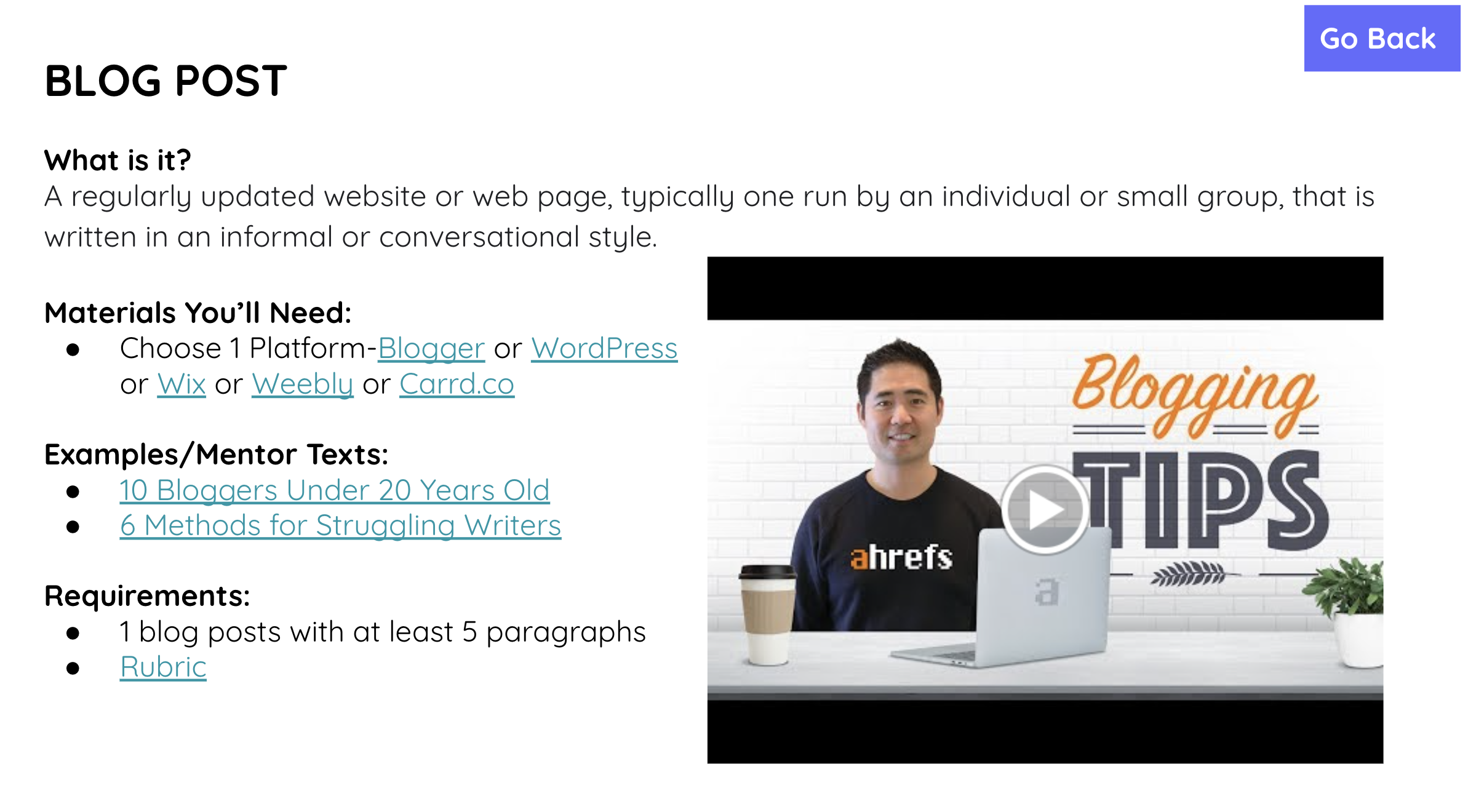
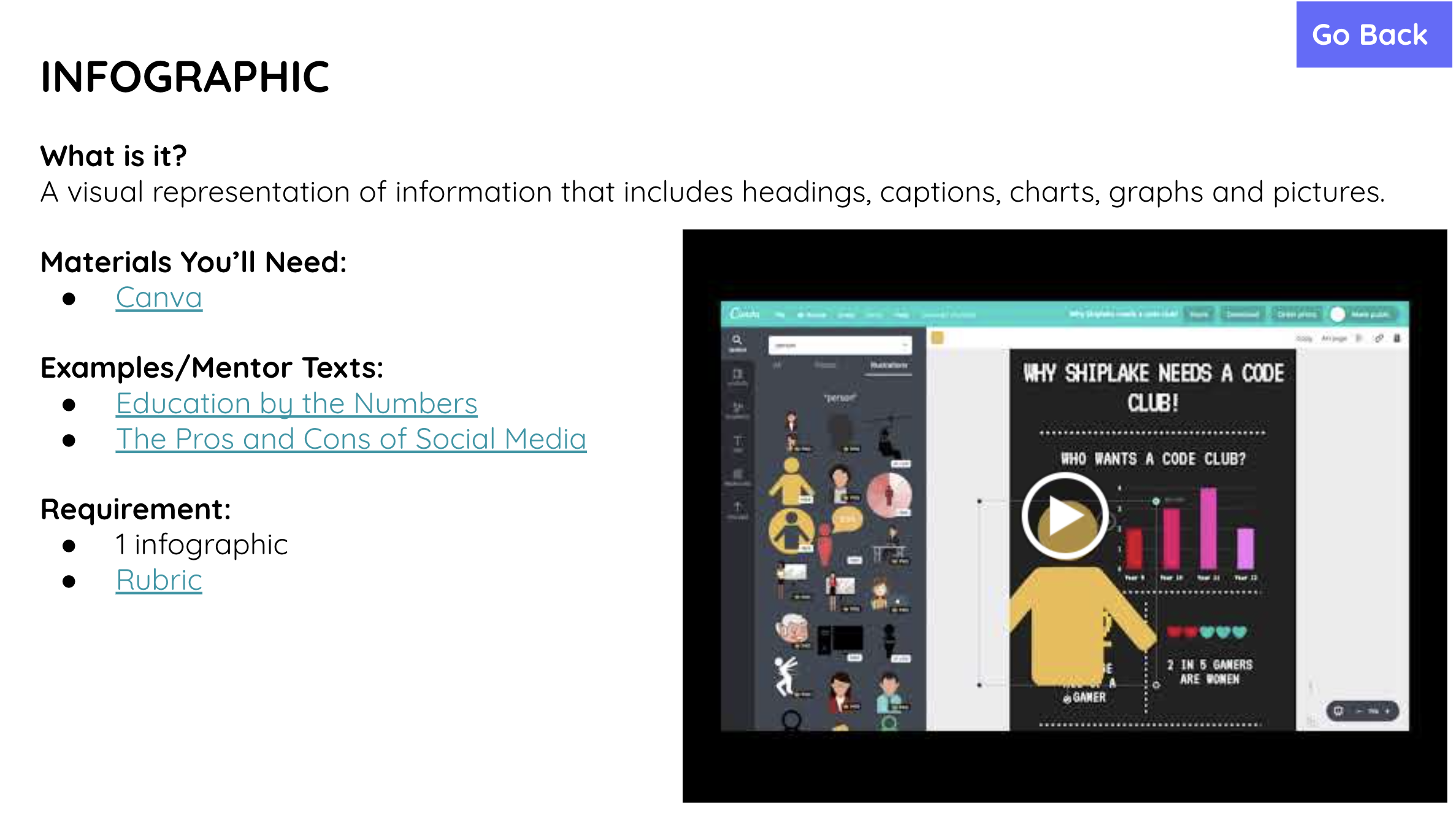
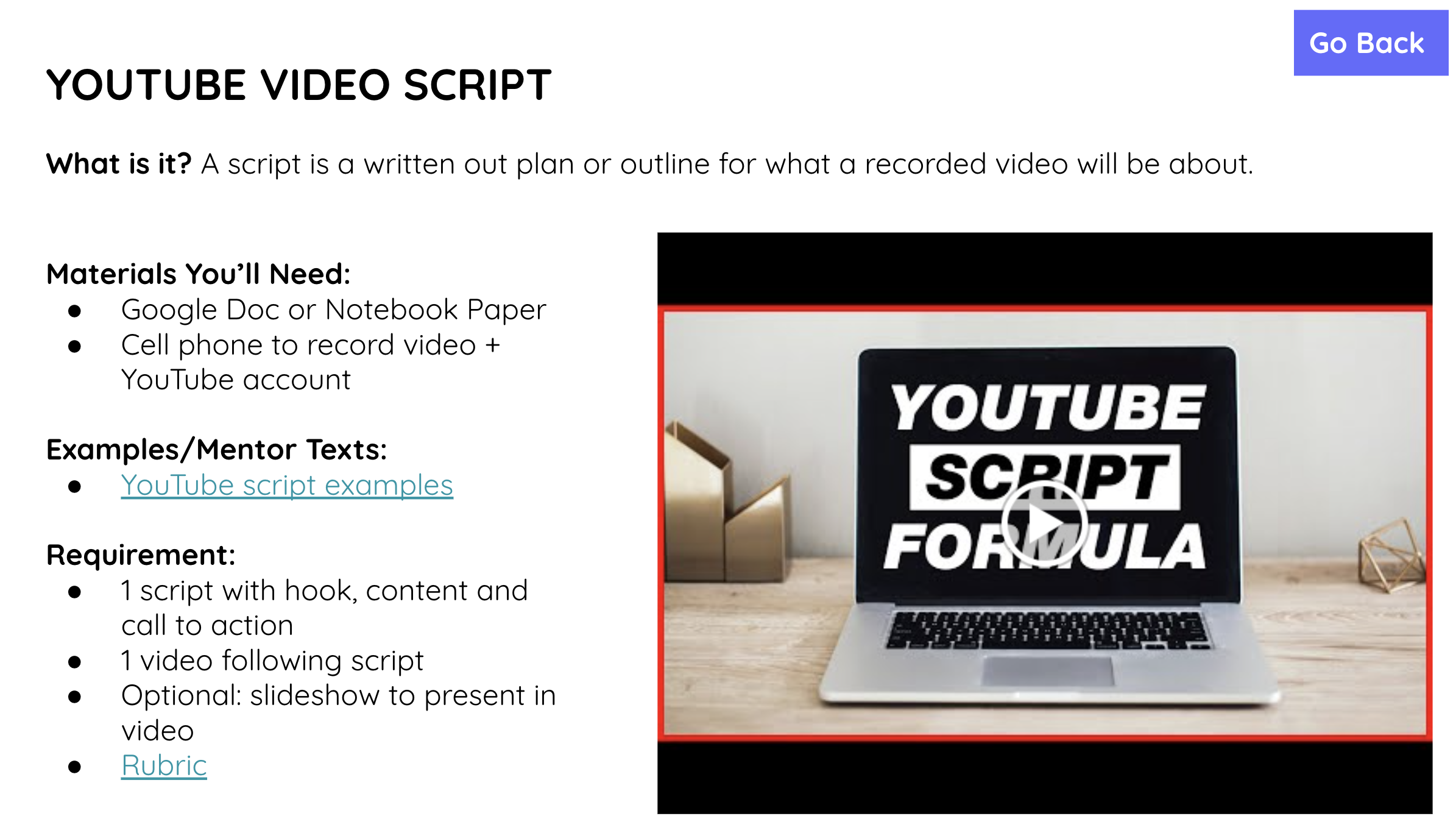
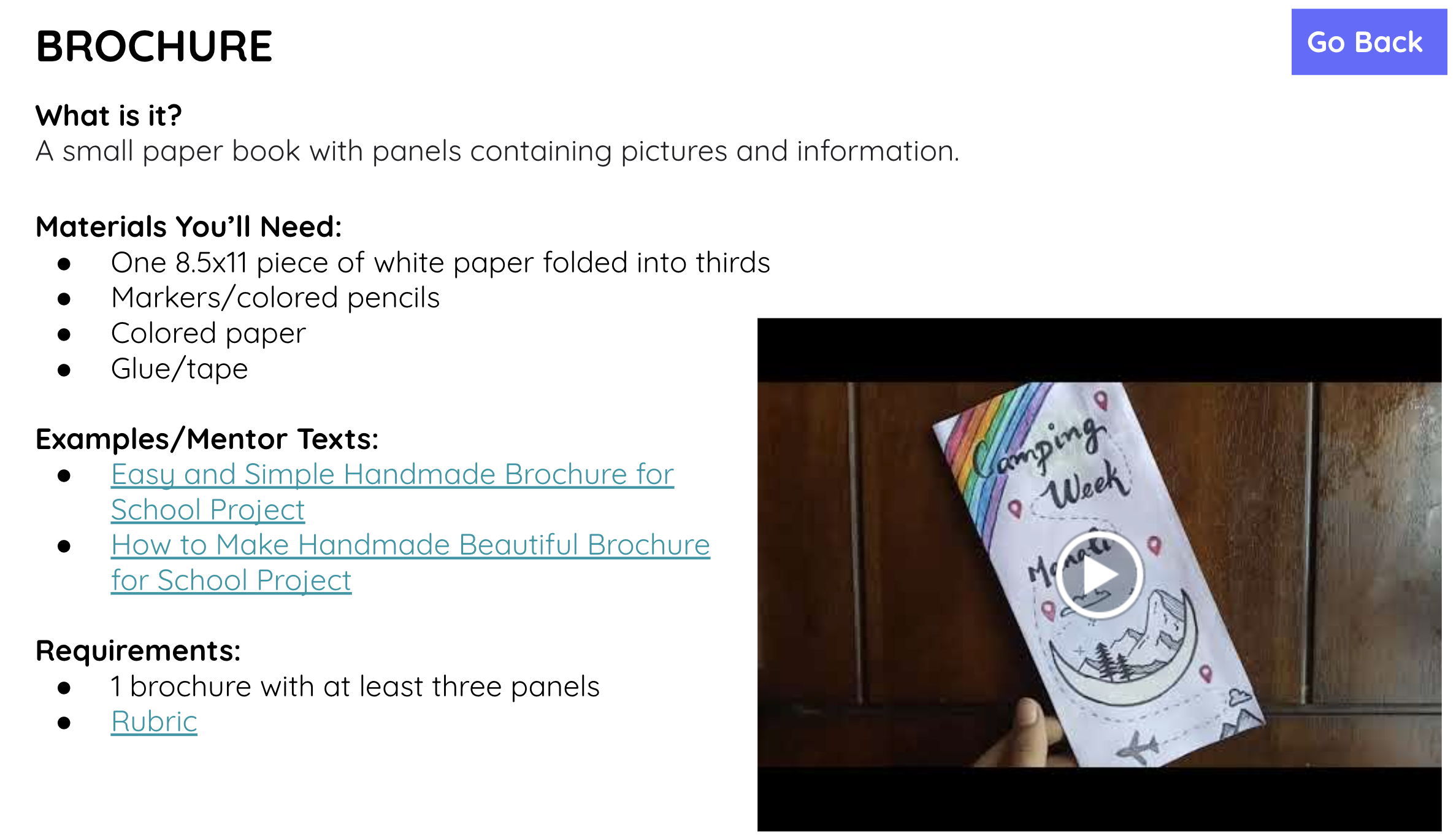
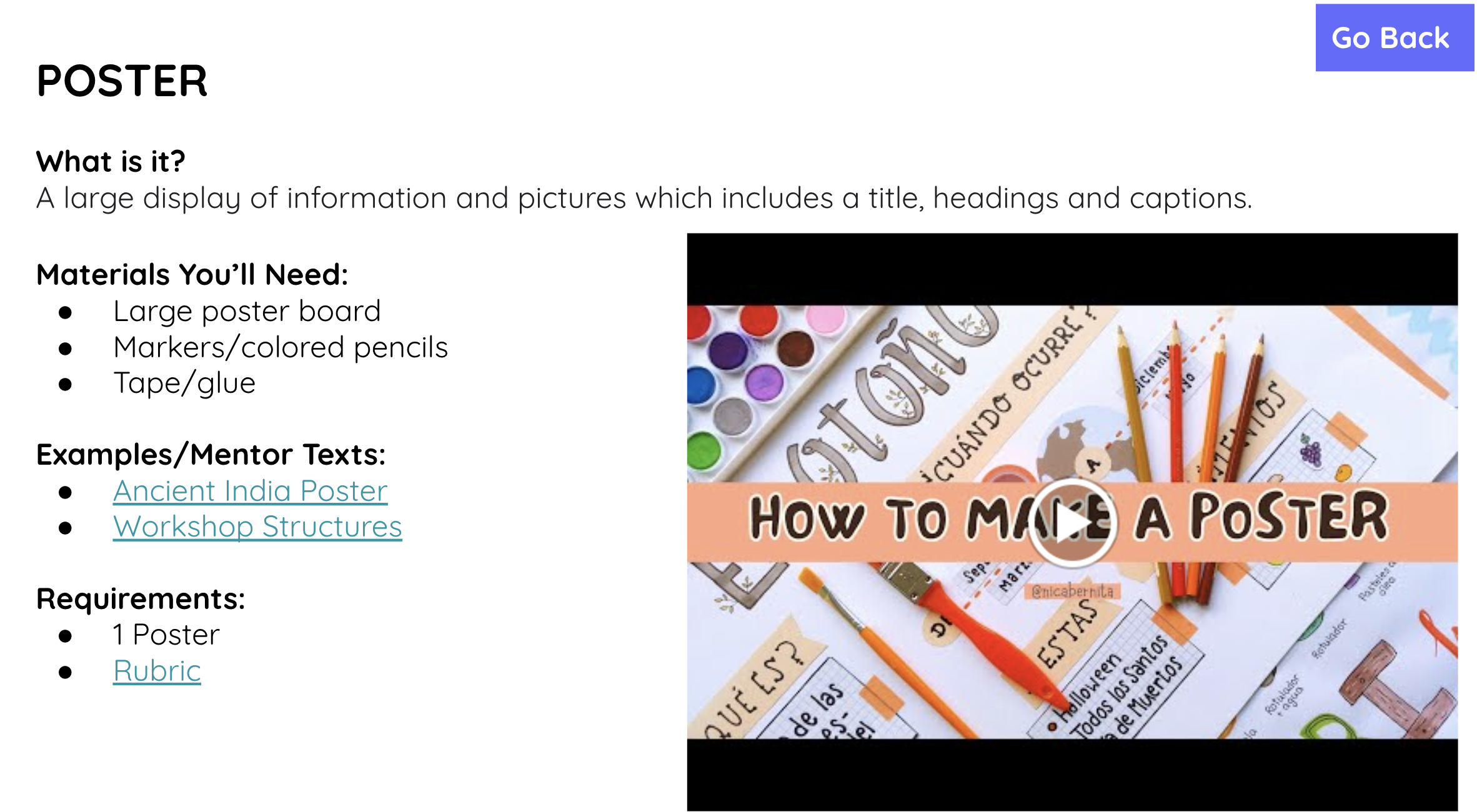
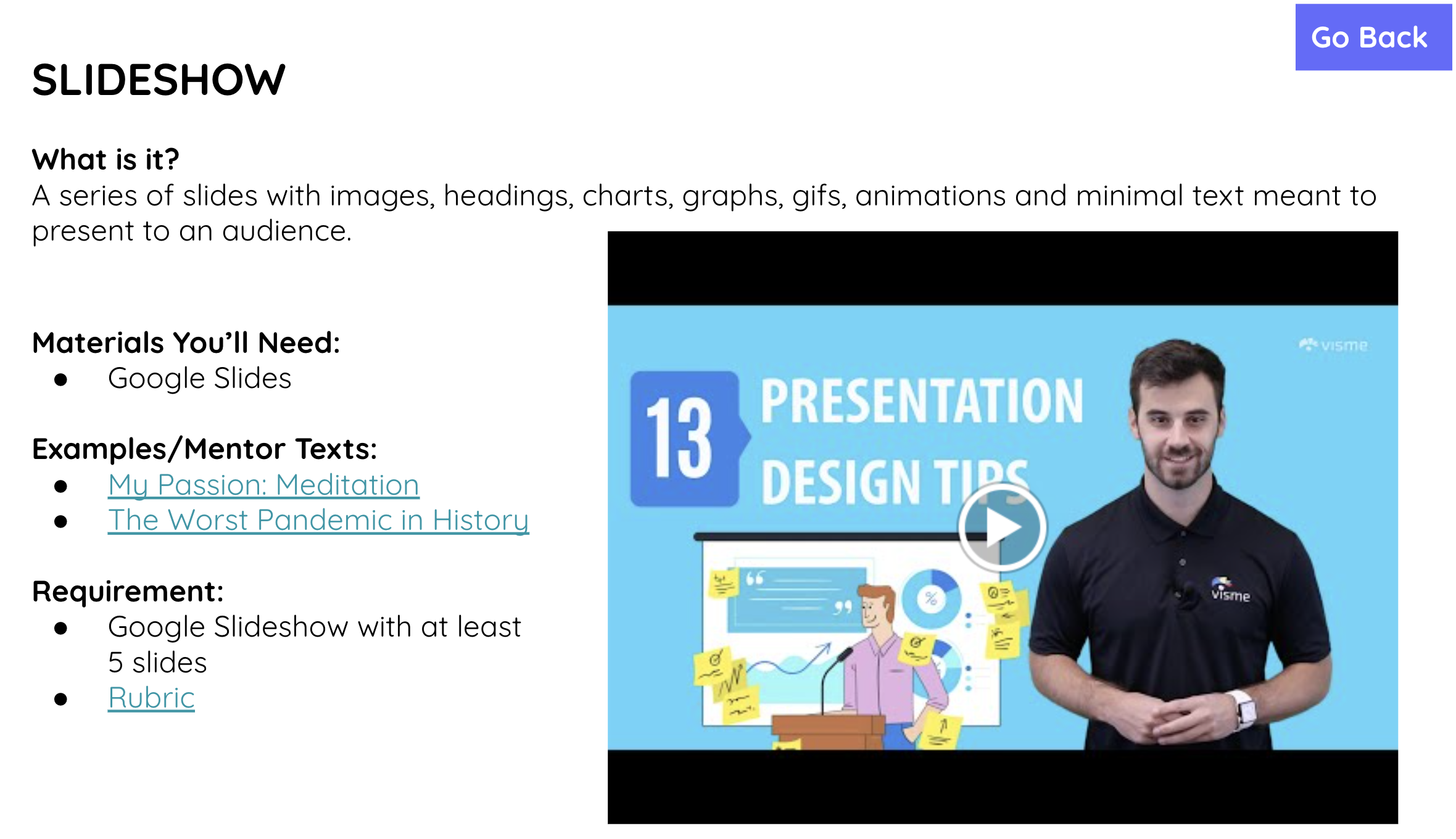

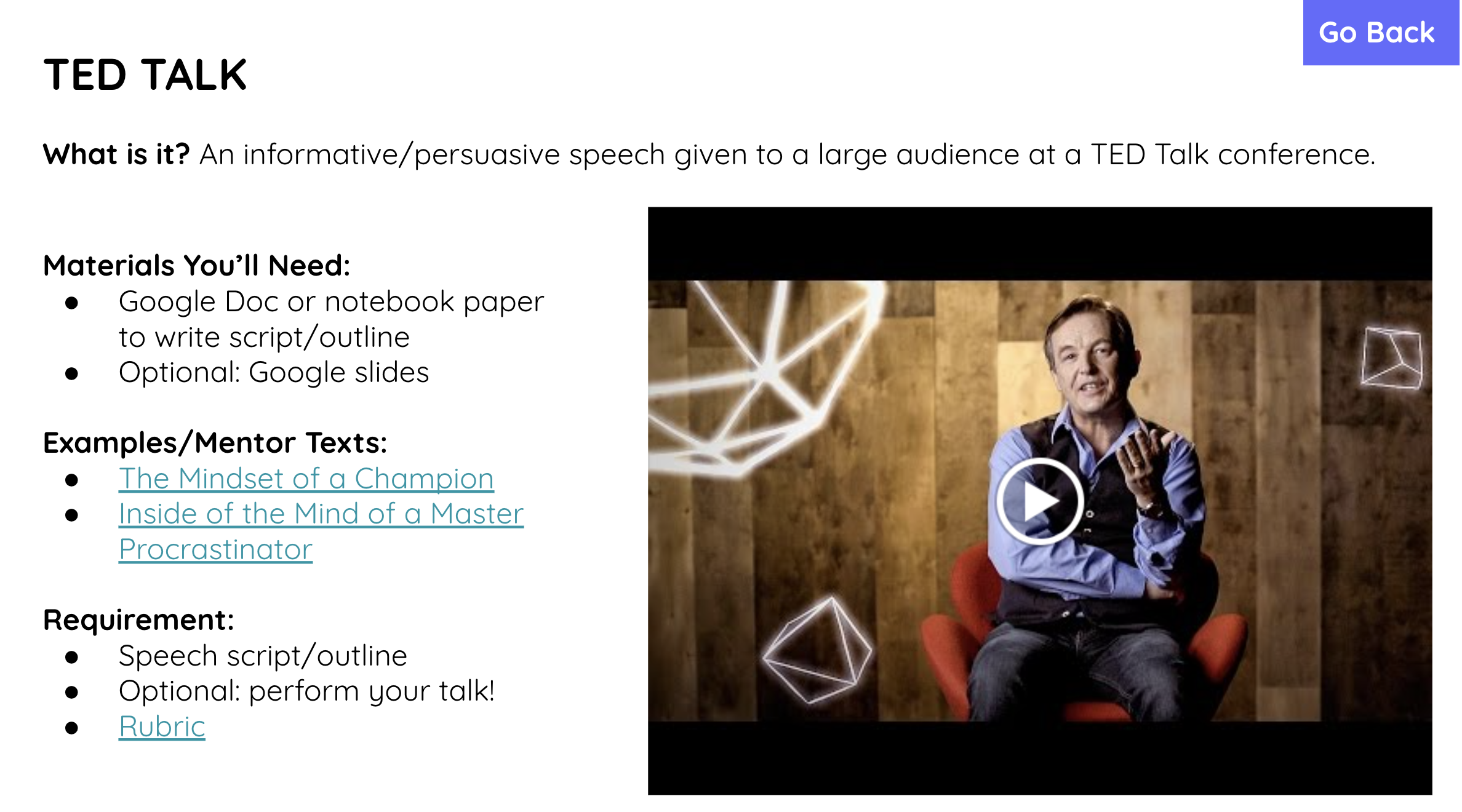
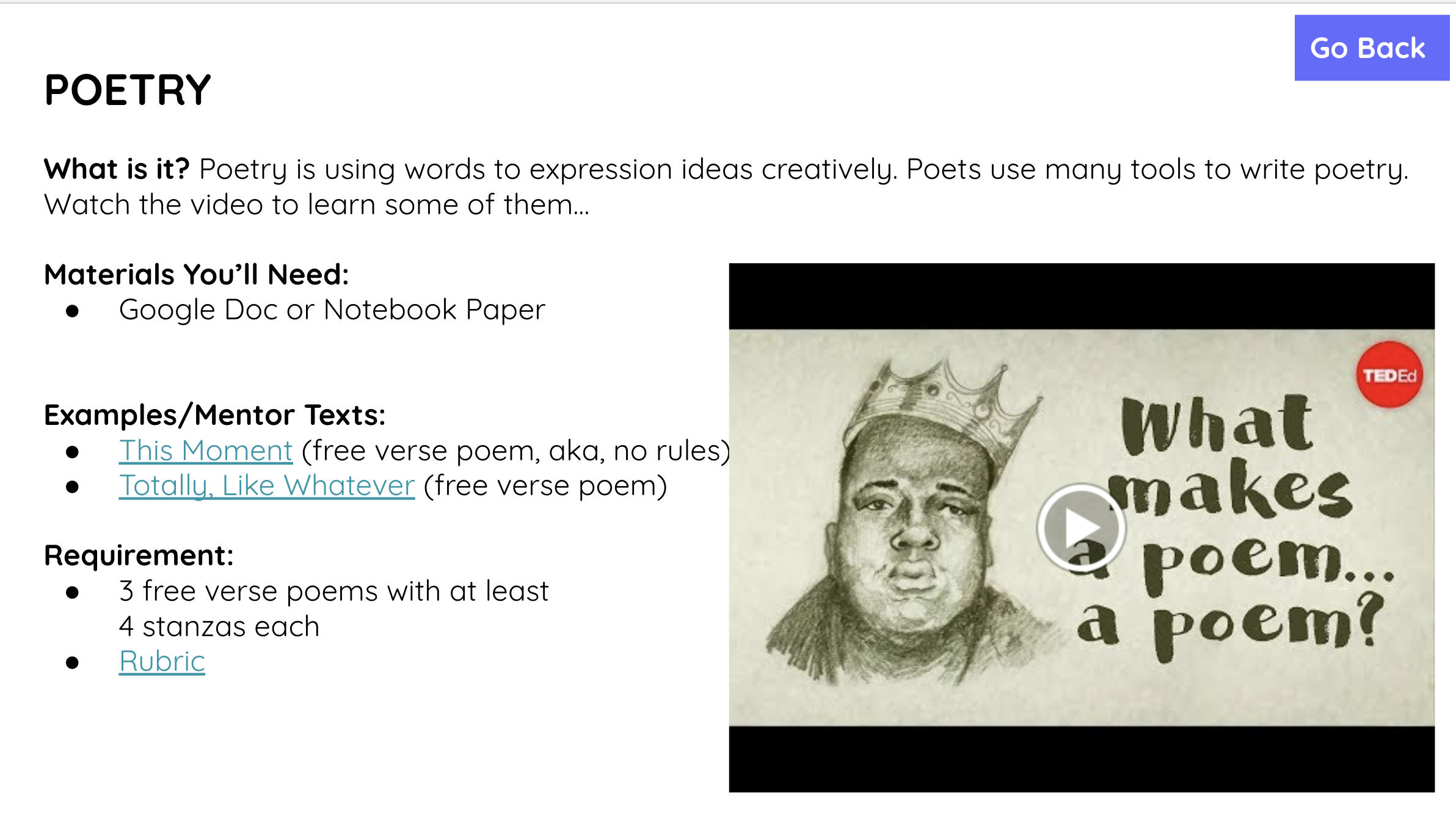


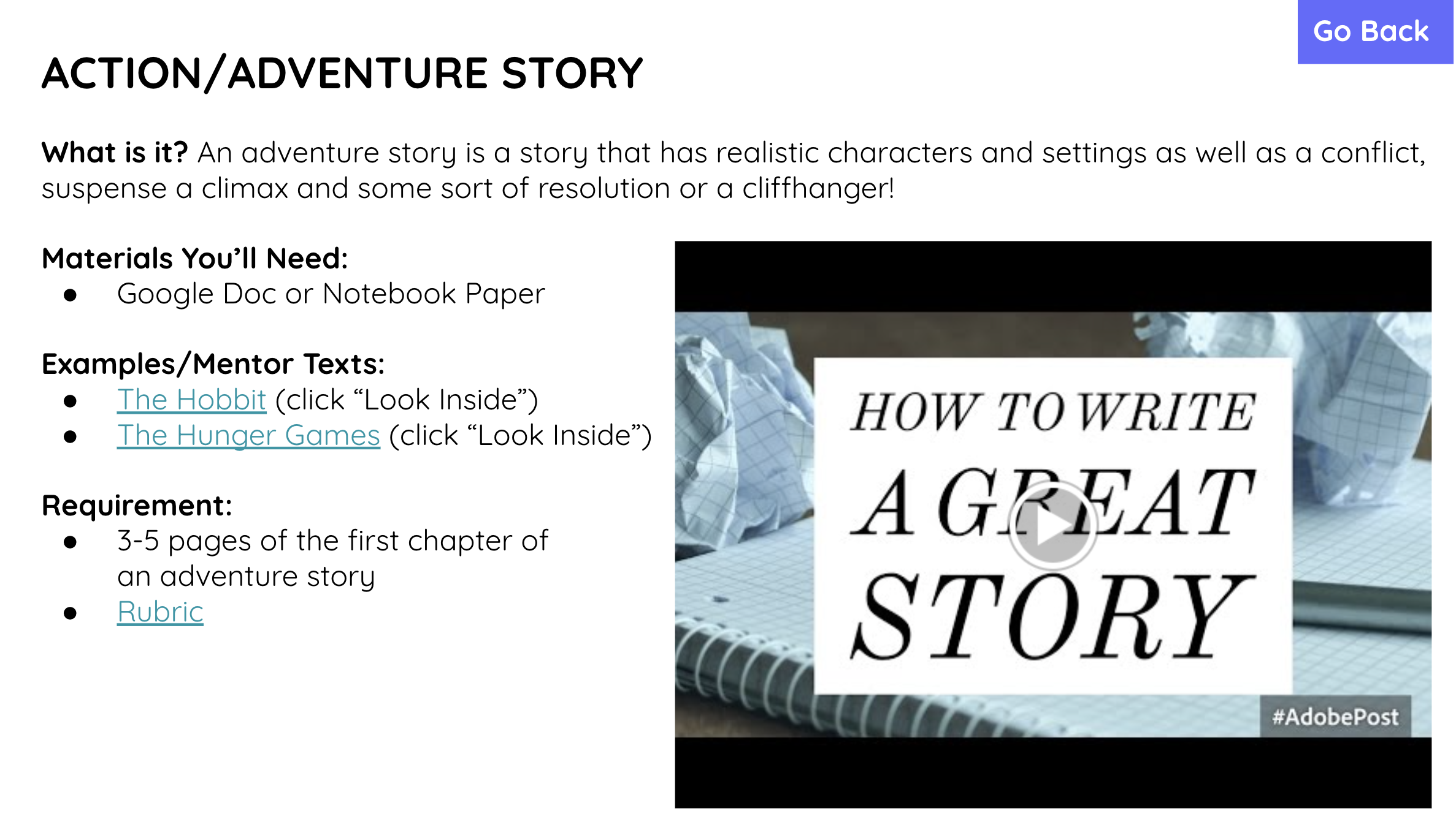
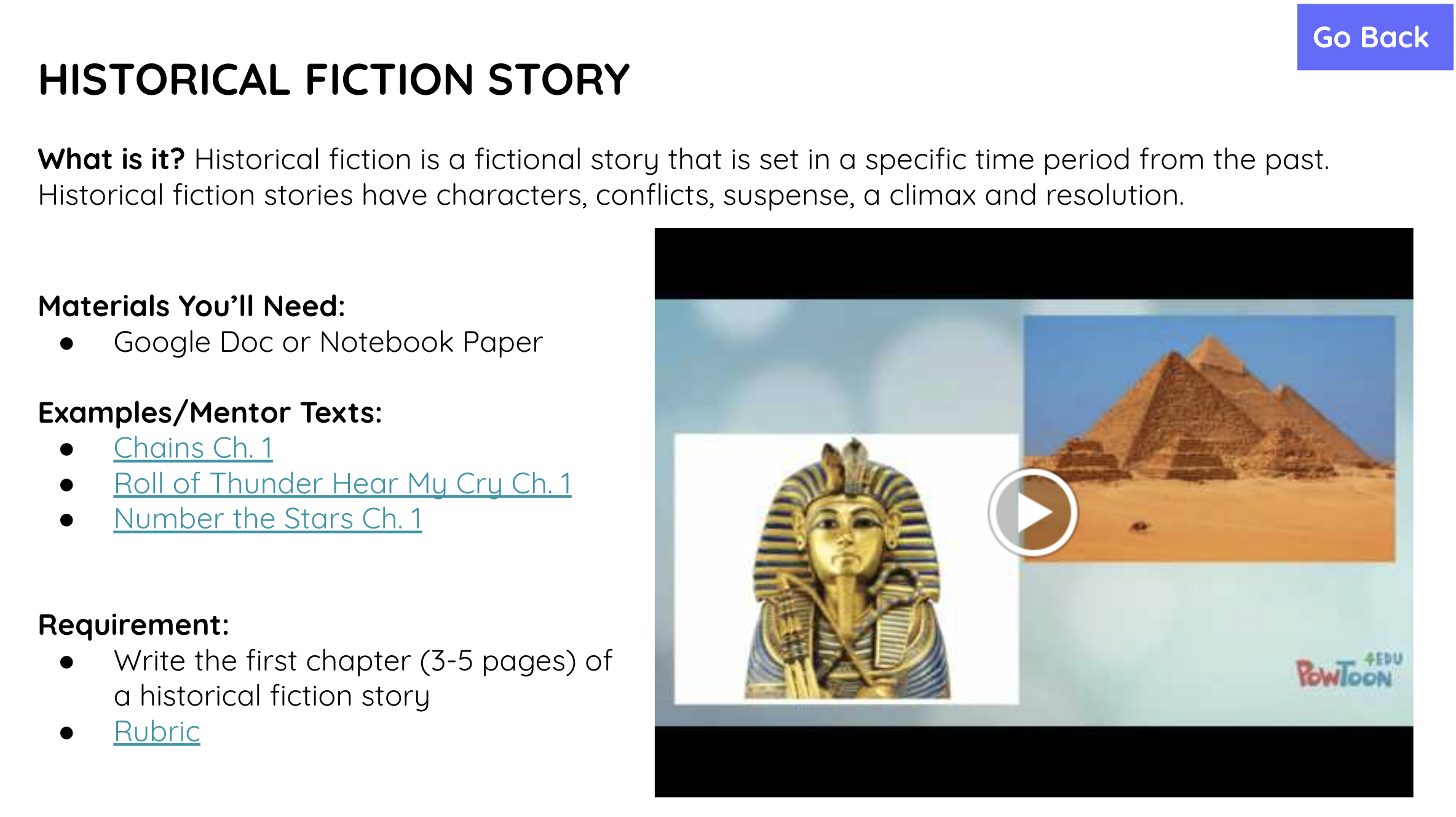
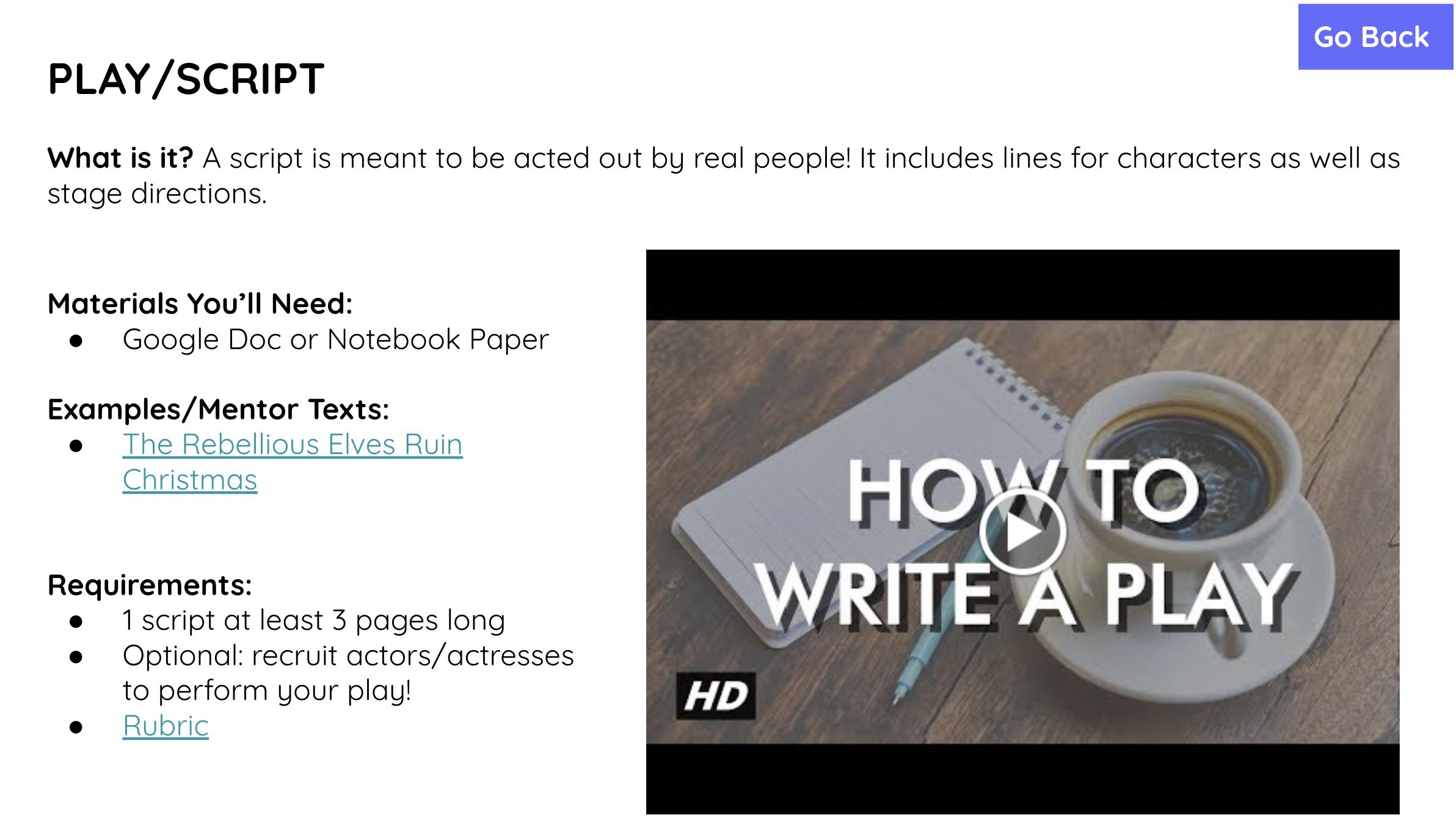
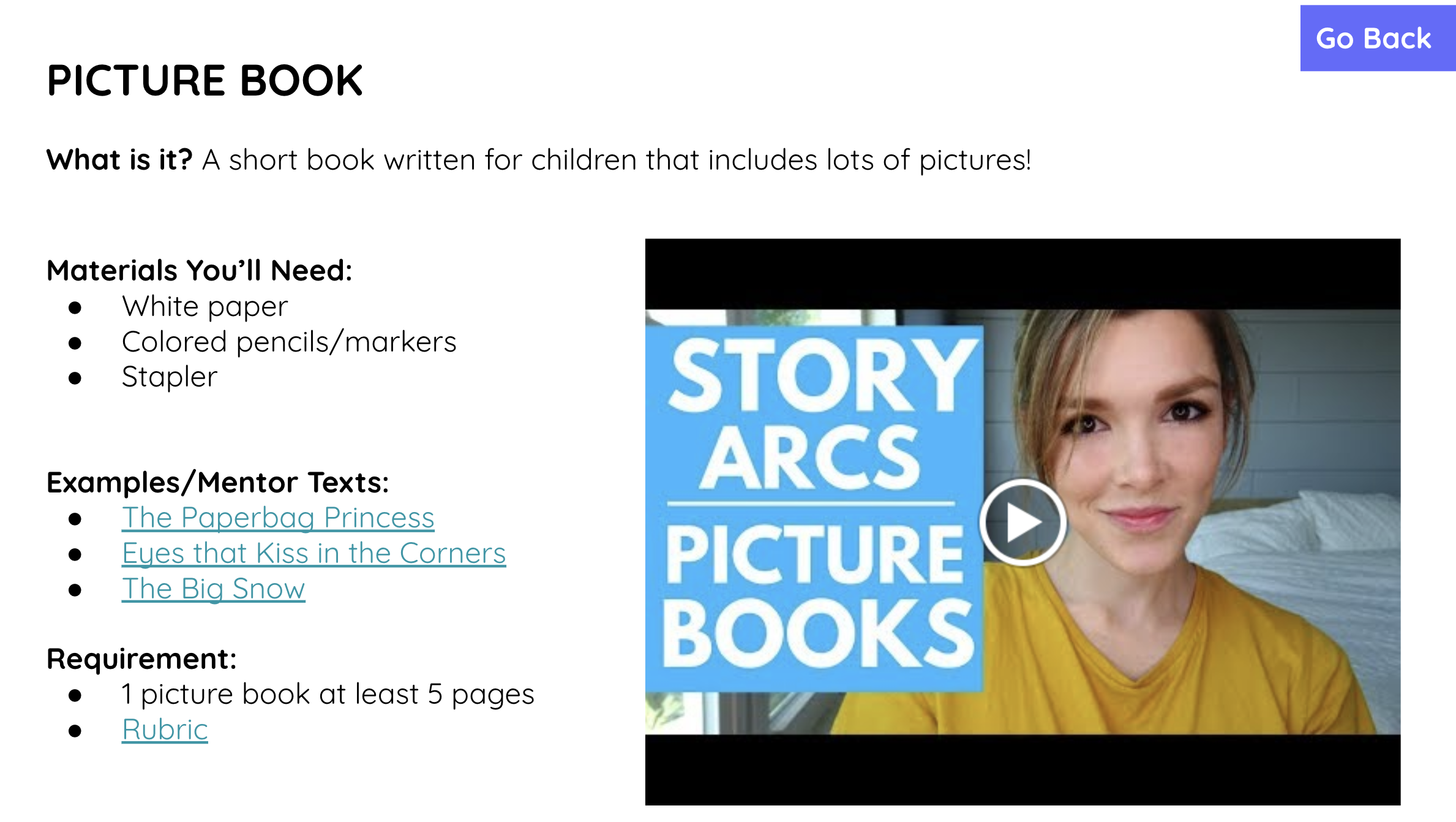
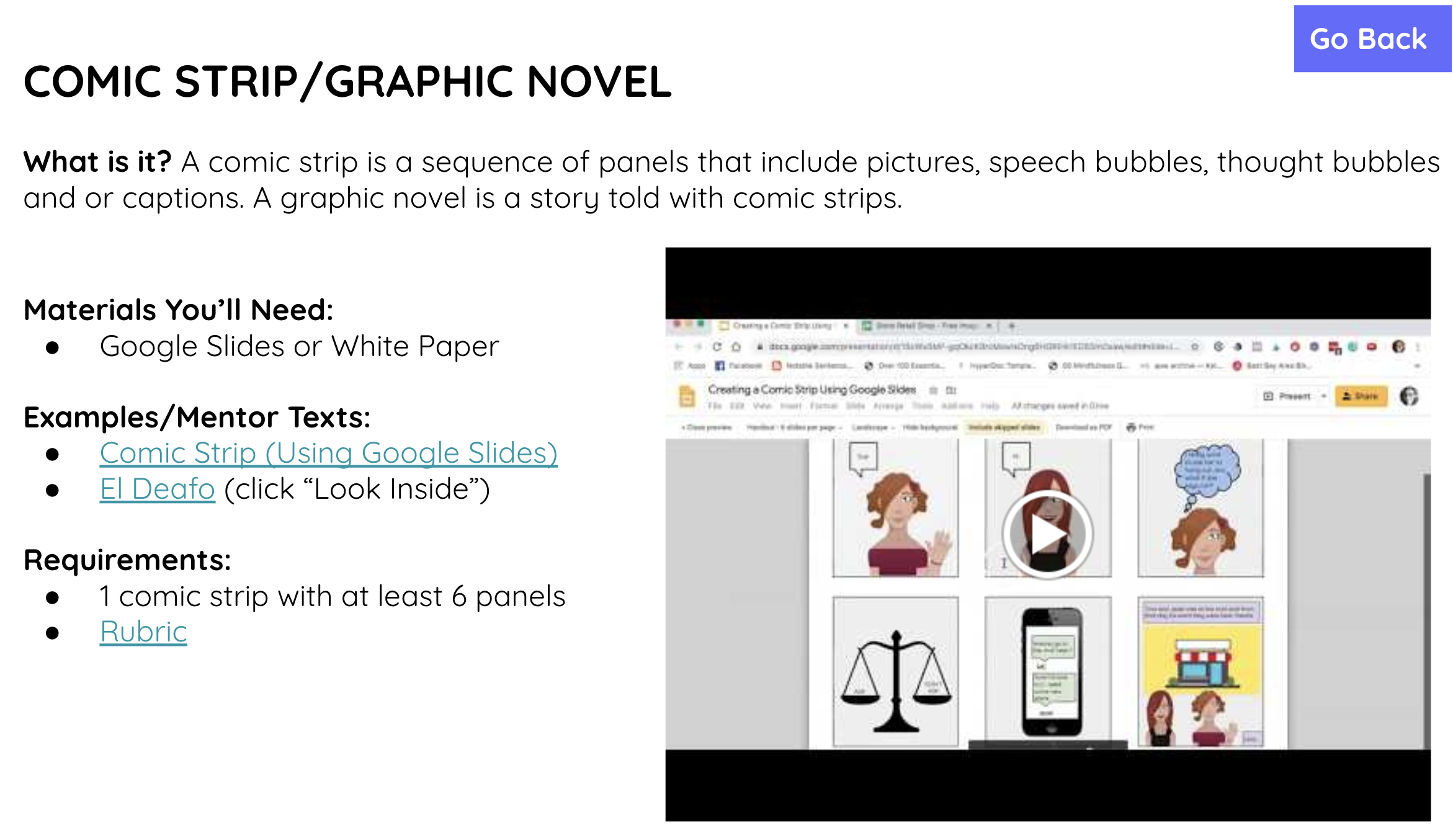
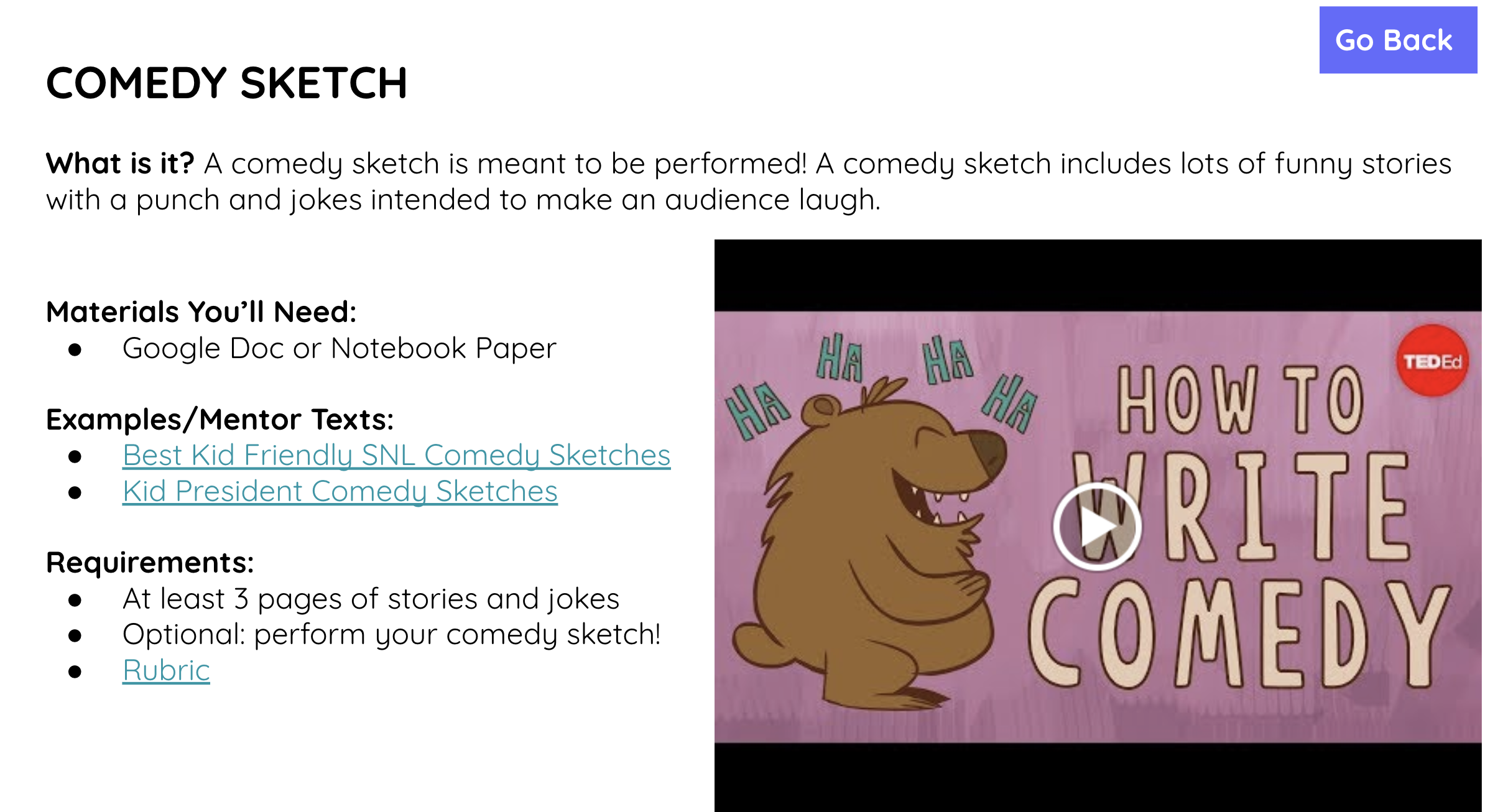
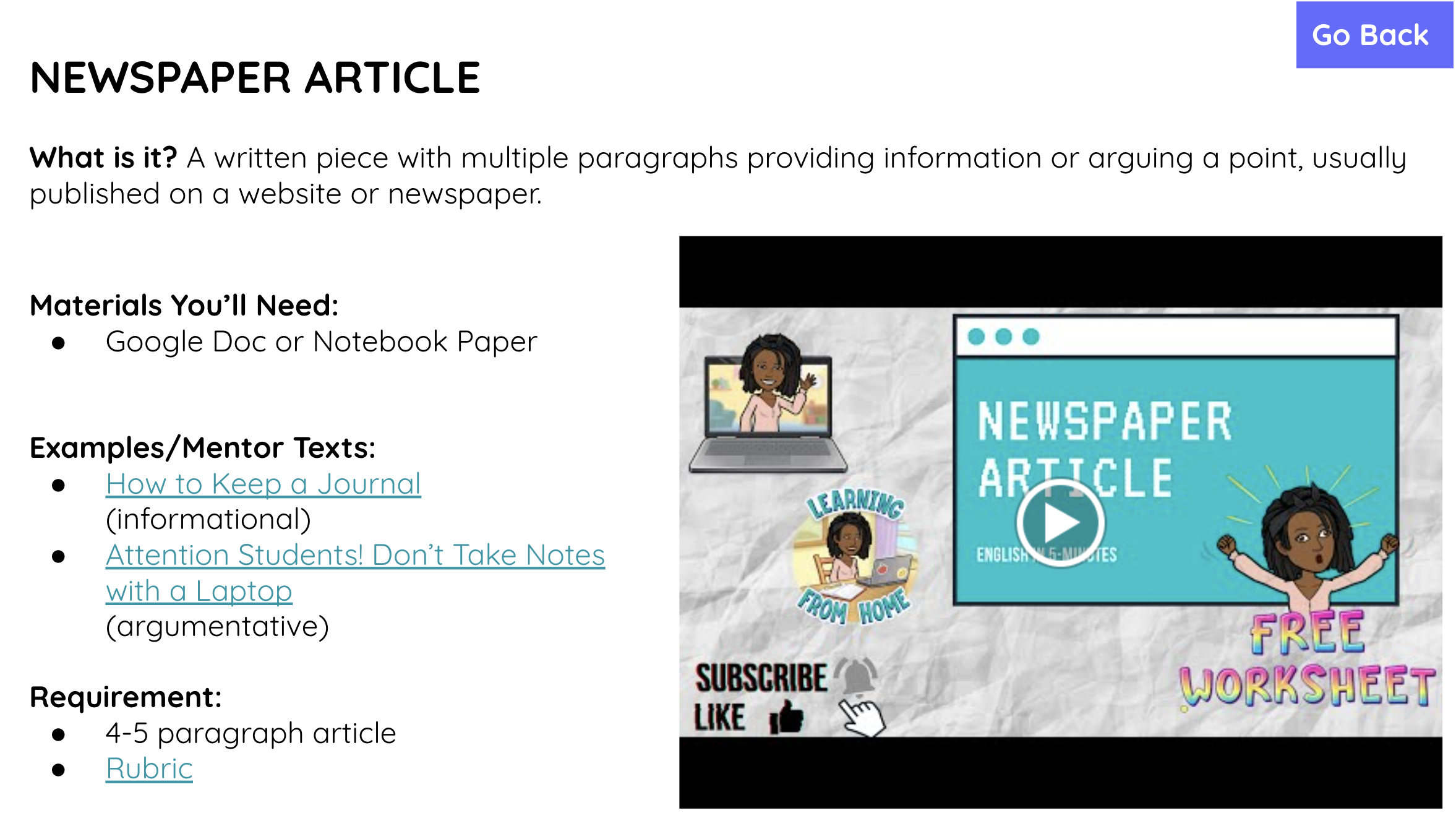
4. Collect Mentor Texts
The mentor texts I chose were excerpts from Amazon books, my own writing or work from past students. I tried to include at least two mentor texts for each genre and sometimes even three. This was probably the most challenging part of putting this unit together. Finding mentor texts can take time but once it’s done, it’s done for years to come. If you’d rather not have to go searching for mentor texts for each genre of your free choice writing unit, check out this already done for you project!
5. Create Rubrics
It may seem daunting to create rubrics for so many different types of writing genres. It’s true it can be daunting, but it doesn’t have to be if you follow these guidelines:
Only include descriptions of the skills that meet criteria, this is called a single point rubric. See below for examples.
Make sure all your rubrics include an equal number of skills. Each of my rubrics includes eight skills or standards.
Make sure all your rubrics add up to the same number of points, so the assignment is worth the same points no matter what genre a student chooses.
Combine genres that are similar into one rubric. I used one rubric for action/adventure, fantasy, historical fiction, and scary story. I also used one rubric for picture book and comic strip as well as one rubric for blog post and newspaper article.
WRap UP
I just finished up my first choice writing unit and used all of the strategies discussed here. Students were highly motivated the entire unit! Yes, some switched genres midway through, but they were still highly engaged. One day I walked around my classroom expecting at least some students to be off task, and not one student was off task! Not only were students were highly engaged, the quality of work was exceptional. I was extremely impressed and definitely plan to do this again. I hope this blog post has inspired you to try this type of unit out yourself!
Further Reading
Who Would You Award “Person of the Year”?
How to Teach Descriptive Writing
4 Ways to Help Students Write Routinely
Spotlight Resource
This is a very engaging project for any time of year! These editable Google Slides allow your students to learn about and choose from 18 different genres of writing. Each slide reviews a different writing genre. For each slide (genre of writing) you'll find:
Mentor texts/writing samples demonstrating the genre in action
Materials needed to write within that genre
A tutorial video explaining how to write within that genre
An editable rubric to help students the expectations for each genre
Also Included:
A Teacher's Guide
Google Form to Survey Students
9 Editable Student Planning Tools
Writing Samples
8 Editable Rubrics
Peer Conferencing Tools
Stamina Observation Tool
Teacher Conference Tool
About the Author
Amanda Werner has been teaching for 13 years and still feels like a novice. Every year is a unique and exciting challenge to inspire a new group of students to become avid readers and writers. Amanda reads educational literature voraciously and writes about the teaching of reading and writing on her website amandawritenow.com. Amanda received her B.A. in English Literature with an emphasis in Humanities at Western Washington University. In her free time, Amanda loves being outdoors with her husband and daughter.


